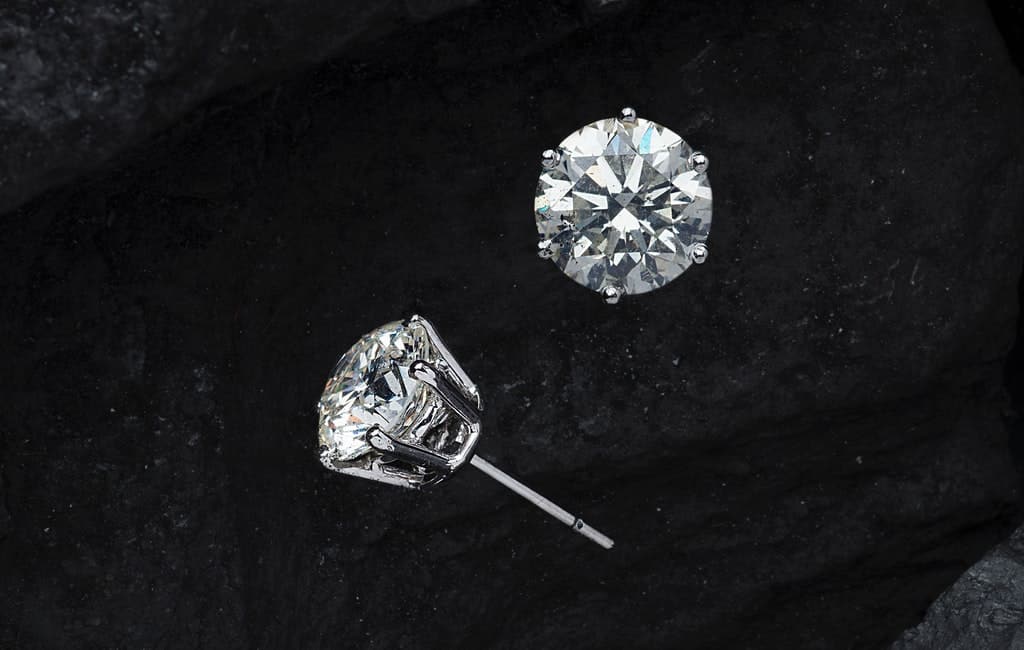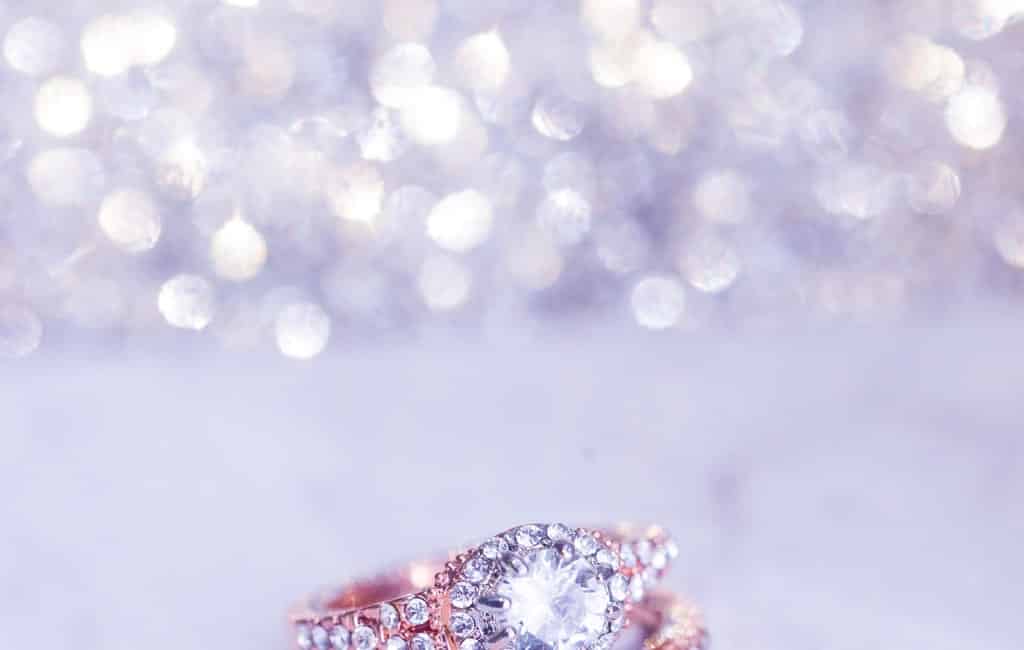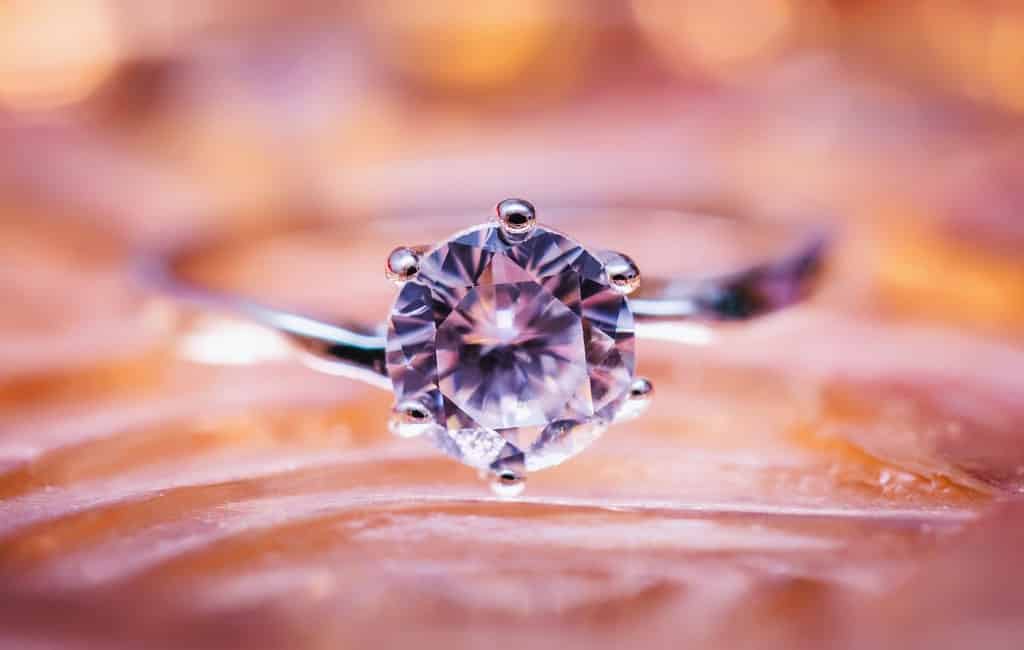Diamond is a solid form of the element carbon with its atoms arranged in a crystal structure. It is regarded as a mineral that is composed of pure carbon and it forms under high temperature and pressure conditions about 100 miles beneath the earth surface. Diamond is called an allotrope of carbon. An allotrope is the existence of two or more different forms of an element. This means that diamond is one of the forms that carbon exists or diamonds contain or are made up of carbon atoms bonded together. But is it a metal?
IS DIAMOND A METAL?
According to the periodic table, carbon is a non metal and being that diamond is one of the various forms (allotrope) of carbon, it is not a metal. The structure of diamonds is termed isometric which means the carbon atoms are bonded in essentially the same way in all directions. The bonds between the carbon atoms are very strong (strong covalent bonds) and each of the carbon atom forms four (4) bonds. A carbon atom has four electrons in its outer shell, said to be tetravalent (can combine with a maximum of four atoms) and all of which form covalent bonds which are strong and hard to break. Most metals are generally hard with the exception of sodium and potassium which are soft. The structure of metals is different from that of diamonds. Metallic solid atoms are arranged in a lattice- like 3D structure where there is a regular array of metal cations surrounded by a sea of delocalized electrons. In diamonds the electrons are used to form bonds, but in metals the electrons are delocalized, free or mobile. Diamond is the hardest naturally occurring substance known. In fact, a diamond is so hard that you can only scratch it with another diamond. Graphite, another allotrope of carbon is so soft that you can wrote with it because its formation process and crystal structure are very different. Hence,the strong covalent bond structure of diamond accounts for its extreme hardness.
Asides hardness, metals share a similar physical property which is high thermal(heat) conductivity with diamond, but the way they conduct heat is different. Diamond is the best thermal conductor around 100m temperature, having thermal conductivity of more than 2000 watts per meter per kelvin (2000W/m*k).

EXAMPLES OF METALS
- Silver
This is a relatively inexpensive and abundant thermal conductor. It is a metal that has a thermal conductivity of 429W/m*k. It is also used in jewelry making and for producing ornaments.
- Copper
This is the most commonly used the metal for manufacturing conductive appliances has a thermal conductivity of 398W/m*k.
- Gold
This is a rare and expensive metal that is used for specific conductive applications has a thermal conductivity of 315W/m*k.
These metals (i.e. silver, copper and gold) are the metals with very high thermal conductivity values with silver being the highest but none of their values comes close to that of diamond. In fact, the thermal conductivity value of diamond is five (5) times higher than copper and silver.
WHY IS DIAMOND SUCH A GREAT CONDUCTOR?
Diamond has strong covalent bonding and low photon scattering. The chemical compositions are stiff and its atoms are arranged in a highly ordered crystalline structure. This characteristic makes it possible to conduct heat easier than metals, liquids and even gases which have a very low thermal conductivity (due to these materials’ well separated, no regular arrangement and loosely packed molecules of gases).
Metals conduct electricity by means of mobile electrons or due to the presence of delocalized electrons.

PROPERTIES OF DIAMOND
Diamond has a very high melting point. The value of its melting point is almost 4000°C. The strong carbon-carbon covalent bonds have to be broken down before the melting can occur. Metals also have a high melting point. It is easy to think or categorize diamond as a metal because of its hardness, high melting point and thermal conductivity. But although these properties are the same for both of them, their structures – which are responsible for these physical properties – are absolutely different.
Diamond does not show any physical property of metals like electrical conductivity, malleability, ductility are insulators or poor conductors of heat because they do not have free or mobile electrons like metals that can move or carry currents.
PROPERTIES OF METALS
- Malleability
This is the capability of being shaped or extended by hammering, forging etc. Malleability can also be defined as the ability of the material to deform into thin sheets under given pressure and metals are malleable because they consist of layers of atoms that can slide over one without another breaking when the metallic bond when the metal is bent, hammered or pressed.
Diamond is not malleable. Instead, it has a brittle nature (hard but liable to break) and because of its brittleness it is used in jewelry making with various designs.
- Ductility
Metals can also be drawn into wires (because they are very malleable).
Diamond is non ductile, that is, it cannot be drawn into thin wires because the layers of atoms cannot slide or roll over each other.
- Reactivity with acids or bases
Metals react with acids or bases. Some metals like zinc and aluminum reacts with bases to produce hydrogen and salt. Zinc and aluminum are called amphotheric which means that they can react with acids as well as bases.
However, diamond does not react with any chemical reagents including strong acids andbases. Acids do not dissolve diamonds or melt them because of the structure of theincredibly tightly packed carbon atoms. There is no acid corrosive enough to changing or destroying the strong carbon crystal. Acids cannot burn a diamond (as a matter of fact,they have no effect on a diamond). On the other hand, acids react with metals to give saltand release hydrogen gas.
OTHER PROPERTIES OF DIAMOND
Diamond also known as the most popular gemstone. They are the most common precious stone found. Generally, the cost per carat (or weight) of a gemstone is based upon a stone’s rarity; that is, the rarer the stone the more expensive.
The diamond is renowned for being the hardest substance. It is also sparkling, durable and the most prized of all gems. The unique structure of a diamond makes it the unusual specimen that it is. As a result of its incredibly precise internal structure – which is made up of tightly packed carbon atoms – the diamond is hard and has a low coefficient of friction, high thermal conductivity, high electrical resistivity, low thermal expansion coefficient and high strength.

